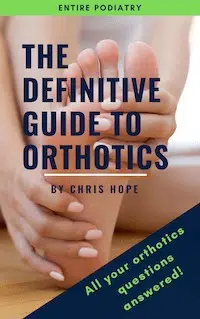The fibula and tibia are the two long bones of the lower leg which, along with the talus, create the ankle joint. The tibia sits towards the inside of the leg and the fibula sits towards the outside. These bones form the bony ‘lumps’ of the ankle. The inside ‘lump’ is formed by the tibia and is known as the medial malleolus and the outside ‘lump’ is formed by the fibula and known as the lateral malleolus.
A fibula fracture can occur either as a result of an injury causing excessive force to go through the bone or as a result of overuse (a stress fracture).
Forceful impact sufficient to fracture the fibula can occur as a result of landing from a height, an awkward fall or trip, a direct blow to the outer ankle or a severe ankle sprain. Fractures of the fibula are common in athletes, especially those that compete in football, rugby, skiing, snowboarding and basketball where there is a quick change in direction. When fractures of the fibula occur with severe ankle sprains (link to common ankle sprains and high ankle sprains) it can result in what is known as an avulsion fracture. This occurs when the ligaments or tendons that attach to the fibular are pulled and stretched to such an extent that they pull a small chunk of bone off the main fibula bone
A stress fracture of the fibula is an overuse injury. A stress fracture will develop when the stresses placed on the bone is more than the bone is able to tolerate. It occurs most commonly in two distinct groups; athletes (specifically runners) and also in the older patient population with osteoporosis and reduced bone density and thus weakened bones. A stress fracture usually occurs gradually over time with pain increasing over weeks.
Types Of Fibula Fractures
Type A: fracture below the ankle joint
Type B: fracture at the level of the joint, with the tibiofibular ligaments typically intact.
Type C: fracture above the joint level which tears the syndesmotic ligaments.
Symptoms Of A Fibula Fracture
A fractured fibula includes those signs and symptoms:
- Localised pain, swelling and tenderness in the lower part of the leg
- Inability to bear weight on the injured leg
- Redness or bruising over the ankle at the fibular malleolus
- Visible deformity in the lower part of the leg
- Tingling or numbness, which usually occurs if there is a neurovascular injury
- Tender to the touch
How Is A Fibula Fracture Diagnosed
A podiatrist can perform a thorough examine of the area and check for any noticeable deformities. X-rays are used to see the fracture and see if a bone has been displaced. If required an MRI, bone scan or CT scan may be required to make a more precise diagnosis and check the severity of the fibula fracture.
What Is The Treatment Of Fibula Fractures
There are many different points at which that the fibula can be fractured. The level of the fracture may direct the treatment.
Nonsurgical Treatment
If the ankle is considered to be intrinsically stable, meaning the broken bone is not out of place or just barely out of place, then you may not require surgery and may be treated conservatively.
A walking cast can be supplied by your podiatrist and may have to be worn between 4-8 weeks. X-rays of the ankle will be repeated to make sure the fragments of your fracture have not moved out of place throughout the healing process.
Surgical Treatment
If the fracture is out of place or your ankle is unstable, your fracture may be treated with surgery. During this type of technique, the bone fragments are initially repositioned into their normal alignment. They are held together with special screws and metal plates attached to the outer surface of the bone. In some cases, a screw or rod inside the bone may be used to keep the bone fragments together while they heal.
Post-Operative Management Of Fibula Fractures
Once healing has occurred it will be important to ensure adequate rehabilitation is conducted. After being immobilised for several weeks, it is normal to feel that the leg and ankle is weakened and the joints are stiff. You may even notice a visible reduction in the size of the calf muscle in comparison to the non-affected leg. After the fracture has healed rehabilitation is vital to strengthen weakened muscles and tendons and to improve the motion of the joints. After an individual assessment your podiatrist can prescribe exercises to improve the range of motion, strength and balance. Balance is a vital part of regaining the ability to walk unassisted. This will stabilise the ankle and reduce the likelihood of re-injury.




